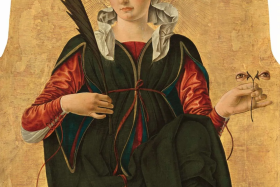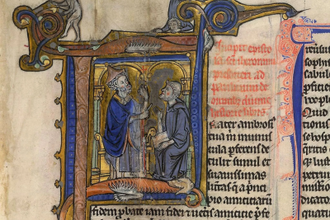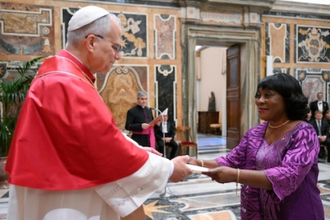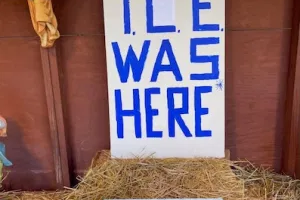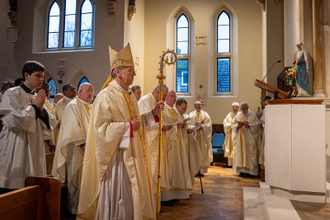Gospel in Art: Judas Iscariot, the one who was to betray him
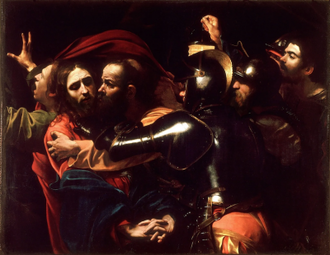
The Taking of Christ, Caravaggio, 1602 © On indefinite loan to the National Gallery of Ireland from Jesuit Community, Leeson St Dublin, through kind generosity of the late Dr Marie Lea-Wilson, 1992 Photo © National Gallery of Ireland.
Source: Christian Art
Gospel of 10 July 2024
Matthew 10:1-7
Jesus summoned his twelve disciples, and gave them authority over unclean spirits with power to cast them out and to cure all kinds of diseases and sickness.
These are the names of the twelve apostles: first, Simon who is called Peter, and his brother Andrew; James the son of Zebedee, and his brother John; Philip and Bartholomew; Thomas, and Matthew the tax collector; James the son of Alphaeus, and Thaddaeus; Simon the Zealot and Judas Iscariot, the one who was to betray him. These twelve Jesus sent out, instructing them as follows:
'Do not turn your steps to pagan territory, and do not enter any Samaritan town; go rather to the lost sheep of the House of Israel. And as you go, proclaim that the kingdom of heaven is close at hand.'
Reflection on the painting
All four Gospels make reference to the twelve disciples that Jesus selected from among the wider group of his followers. They were called to share in his ministry in a special way, with privileged access to Jesus. They were given much, and much was now expected of them.
When the gospel writers name the twelve and when they come to Judas Iscariot they always refer to him as 'the one who was to betray him'. They were, of course, writing with hindsight. They knew that one of this privileged group, one of the twelve, went on to betray Jesus to the religious authorities who, in turn, handed him over to the political authorities as a threat to the peace. The gospel writers never try to gloss over the stark reality that one of those specially chosen by Jesus went on to betray him.
In the National Art Gallery of Dublin there is a wonderful painting by Caravaggio of the moment of Judas's betrayal of Jesus and the resulting arrest, the "Taking of Christ" as it is called. The story of Judas reminds us that Jesus' choice of us does not automatically mean our choice of him!
Caravaggio painted this work for the Roman Marquis Ciriaco Mattei in 1602. Judas has identified Christ with a kiss, as the temple guards move in to seize him. The fleeing disciple in disarray on the left is St John the Evangelist. Only the moon lights the scene. Although the man at the far right is holding a lantern, it is, in reality, an ineffective source of illumination. In that man's features Caravaggio portrayed himself, aged 31, as an observer of events, a device he frequently used in his paintings. Caravaggio placed the figures very close to one another and close to the picture plane, giving the scene an extraordinary sense of drama.
LINKS
Gospel in Art: https://christian.art/
Today's Reflection: https://christian.art/daily-gospel-reading/matthew-10-1-7-2024/



